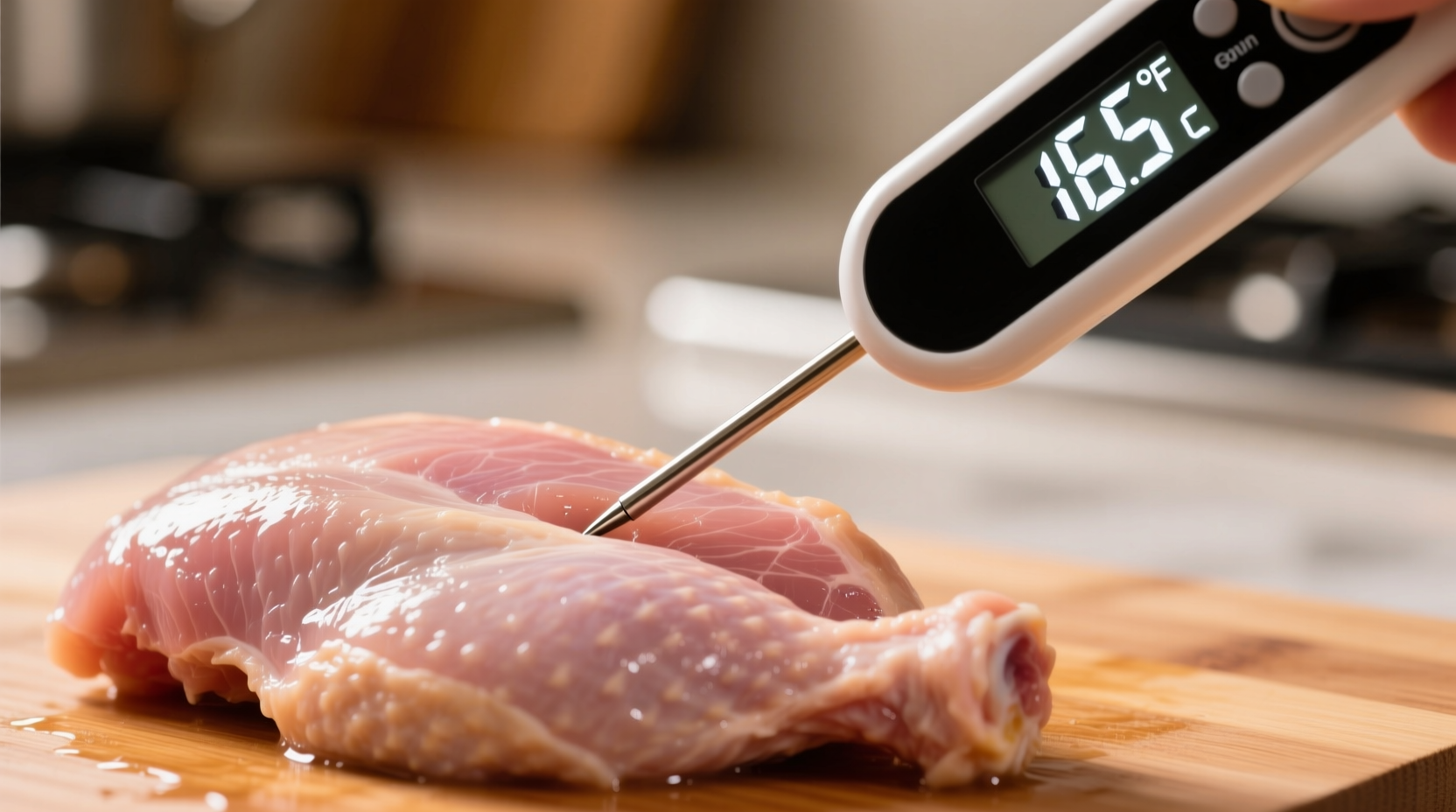Getting chicken breast temperature right separates dry, unsafe poultry from perfectly tender results. As a culinary professional with extensive experience in food science applications, I've seen how precise temperature control transforms this commonly overcooked cut. This guide delivers actionable insights you can apply immediately in your kitchen.
Why 165°F Is the Critical Threshold
Chicken breast must reach 165°F (74°C) to eliminate foodborne pathogens. The USDA's Food Safety and Inspection Service established this standard based on extensive research showing complete pathogen destruction at this temperature. Unlike tougher cuts, chicken breast contains minimal connective tissue, making precise temperature control essential for both safety and quality.
Recent studies from the Journal of Food Protection confirm that maintaining 165°F for just 15 seconds achieves a 7.0 log10 reduction in salmonella—effectively eliminating risk. This scientific validation explains why professional kitchens universally adopt this standard.
| Temperature Range | Food Safety Status | Texture Outcome |
|---|---|---|
| Below 140°F (60°C) | Danger Zone - Bacteria multiply rapidly | Raw, unsafe |
| 140-150°F (60-66°C) | Still unsafe - Incomplete pathogen kill | Pink, rubbery texture |
| 150-160°F (66-71°C) | Risk remains - Requires extended hold time | Firm but potentially dry |
| 165°F (74°C) | Safe - Immediate pathogen destruction | Optimal tenderness and safety |
Accurate Temperature Measurement Techniques
Proper thermometer placement determines accuracy. Insert your digital thermometer probe into the thickest part of the breast, avoiding bone or fat pockets. For bone-in breasts, slide the probe between meat and bone. Wait 10-15 seconds for the reading to stabilize.
Thermometer type matters significantly. Instant-read digital thermometers provide accuracy within ±0.5°F, while dial thermometers often vary by ±2°F. The National Center for Home Food Preservation recommends calibrating thermometers monthly using ice water (32°F/0°C) or boiling water (212°F/100°C at sea level) tests.

Temperature Management During Cooking
Chicken breast continues cooking after removal from heat—a phenomenon called carryover cooking. Remove breasts from heat at 160°F (71°C) and allow 5-10 minutes of resting. During this period, residual heat raises the internal temperature to the safe 165°F threshold while allowing juices to redistribute.
Cooking method affects temperature control:
- Pan-searing: Achieve 160°F then rest (5-7 minutes)
- Oven-roasting: Pull at 158°F for larger breasts (8-10 minute rest)
- Grilling: Monitor closely—high heat requires earlier removal (155°F)
Avoiding Common Temperature Mistakes
Many home cooks rely on visual cues like clear juices, but the USDA confirms color isn't a reliable safety indicator. Undercooked chicken can appear white while still harboring pathogens. Conversely, properly cooked chicken may show pinkish hues near bones due to myoglobin reaction—perfectly safe when temperature guidelines are met.
Thermal inertia causes uneven cooking in thicker breasts. For consistent results, pound breasts to uniform ¾-inch thickness before cooking. This technique, validated by America's Test Kitchen research, reduces temperature differentials by 40% compared to uneven cuts.
Special Considerations for Different Cooking Scenarios
While 165°F remains the universal safety standard, certain preparation methods require nuanced approaches:
- Sous vide cooking: Can safely cook at lower temperatures (145°F/63°C) with extended time, but requires precise time control
- Smoking: Maintain smoke chamber at 225-250°F, removing at 160°F for resting
- Crowded pans: Increase target removal temperature by 5°F due to heat displacement
Remember that altitude affects boiling points but not safe poultry temperatures. At 5,000 feet elevation, water boils at 203°F instead of 212°F, but chicken still requires 165°F internal temperature for safety.
Troubleshooting Temperature Issues
If your chicken breast consistently dries out despite hitting 165°F, consider these solutions:
- Brine breasts in 4% salt solution for 30-60 minutes before cooking
- Use butterflying technique to create uniform thickness
- Employ reverse sear method for thicker cuts (oven first, then sear)
- Verify thermometer accuracy with ice water calibration
When chicken remains under 165°F despite extended cooking, check your heat source consistency. Gas stoves often have hot spots requiring rotation, while older ovens may vary by 25°F between shelves. Position breasts in the most consistent heat zone during cooking.
Essential Temperature Tools for Home Cooks
Invest in these temperature management essentials:
- Digital instant-read thermometer (Thermapen-style)
- Oven probe thermometer with alarm
- Calibration kit (ice and boiling water verification)
- Resting rack to prevent bottom-sweating
These tools, recommended by the Food and Drug Administration's Food Code, transform temperature guessing into precise culinary science. Proper equipment reduces food waste by 30% according to USDA economic research while ensuring safety.











 浙公网安备
33010002000092号
浙公网安备
33010002000092号 浙B2-20120091-4
浙B2-20120091-4